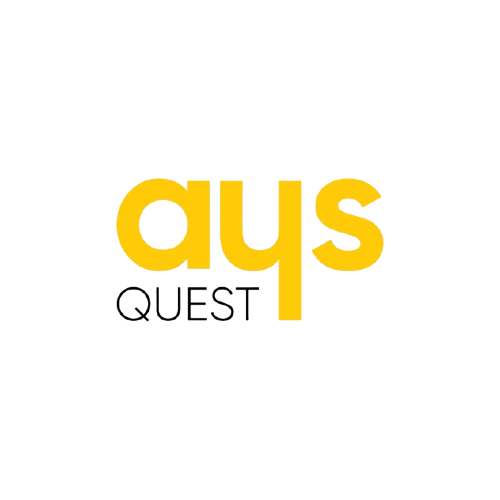Running a fashion eCommerce business is exciting — but it can also be overwhelming. Between managing inventory, processing orders, handling customer service, and marketing your brand, the workload can quickly pile up.
That’s where the right eCommerce tools come in. From inventory tracking to marketing automation and customer relationship management, these tools help you save time, reduce errors, and focus on growing your business.
Here’s a guide to the top tools you can use to streamline your fashion eCommerce operations and run your store more efficiently.
1. Inventory Management Tools
In the fashion industry, stock control is crucial. Overstocking leads to wasted storage costs, while understocking means missed sales opportunities.
Recommended Tools:
- TradeGecko (QuickBooks Commerce): Great for tracking inventory across multiple channels.
- Cin7: Perfect for fashion brands selling in both physical and online stores.
- Stocky (for Shopify): Ideal for forecasting and restocking based on trends.
Why It Helps:
- Tracks real-time inventory.
- Predicts demand for seasonal fashion items.
- Reduces the risk of overselling.
2. Order and Shipping Management Tools
Fast, reliable delivery is essential in fashion eCommerce, where customers often buy for specific events or seasons.
Recommended Tools:
- ShipStation: Integrates with multiple carriers for faster fulfilment.
- Easyship: Offers discounted shipping rates and global delivery options.
- AfterShip: Provides branded tracking pages and automated shipping updates.
Why It Helps:
- Simplifies order processing.
- Speeds up shipping times.
- Improves the post-purchase experience.
3. Product Information Management (PIM) Tools
With fashion, product details matter — size charts, fabric composition, colours, and care instructions all influence buying decisions.
Recommended Tools:
- Akeneo: A robust PIM for managing product descriptions and images.
- Pimcore: Helps centralise product data across channels.
- Salsify: Combines PIM with content management and analytics.
Why It Helps:
- Ensures accurate, consistent product information.
- Saves time on manual data updates.
- Improves the customer shopping experience.
4. Marketing Automation Tools
Fashion trends move fast — and so should your marketing. Automation ensures your campaigns reach customers at the right time without constant manual effort.
Recommended Tools:
- Klaviyo: Perfect for personalised email and SMS marketing.
- Omnisend: Combines email, SMS, and push notifications.
- Mailchimp: Affordable and beginner-friendly automation.
Why It Helps:
- Sends personalised recommendations.
- Boosts engagement with targeted offers.
- Saves hours on repetitive marketing tasks.
5. Social Media Management Tools
Social media is a key sales channel for fashion brands, especially platforms like Instagram, TikTok, and Pinterest.
Recommended Tools:
- Later: Visual content scheduling for Instagram and TikTok.
- Hootsuite: All-in-one platform for multi-channel posting.
- Canva: Creates professional-looking graphics and promotional content.
Why It Helps:
- Maintains a consistent posting schedule.
- Tracks engagement and performance.
- Allows for better visual branding.
6. Customer Relationship Management (CRM) Tools
A strong relationship with your customers can lead to repeat purchases and brand loyalty.
Recommended Tools:
- HubSpot CRM: Free and feature-rich for growing businesses.
- Zoho CRM: Affordable and highly customisable.
- Freshworks CRM: Designed for sales and support integration.
Why It Helps:
- Stores customer purchase history.
- Helps segment customers for targeted offers.
- Improves customer satisfaction with personalised communication.
7. Analytics and Reporting Tools
Fashion eCommerce thrives on trends — and data helps you identify them quickly.
Recommended Tools:
- Google Analytics 4: Tracks website traffic and conversion data.
- Hotjar: Analyses customer behaviour with heatmaps.
- Triple Whale: Focuses on eCommerce-specific performance tracking.
Why It Helps:
- Identifies best-selling products.
- Tracks ROI on marketing campaigns.
- Helps optimise pricing and promotions.
8. Returns and Exchange Management Tools
In fashion, returns are common due to sizing issues or customer preference changes.
Recommended Tools:
- Loop Returns: Automates exchanges and store credits.
- Returnly: Provides instant store credit to encourage re-purchase.
- Happy Returns: Streamlines in-person return drop-offs.
Why It Helps:
- Simplifies the returns process.
- Reduces refund-related revenue loss.
- Keeps customers satisfied with hassle-free returns.
9. Visual Merchandising Tools
A visually appealing store boosts conversions, both online and offline.
Recommended Tools:
- Figma: Designs stunning product page layouts.
- Shogun Page Builder: Creates custom landing pages on Shopify.
- Adobe Photoshop: Perfect for editing product images.
Why It Helps:
- Makes your store more attractive.
- Increases time spent on site.
- Encourages customers to explore more products.
10. Collaboration and Workflow Tools
Your team needs smooth communication to keep up with the fast-paced fashion industry.
Recommended Tools:
- Slack: Instant messaging for teams.
- Trello: Organises design, production, and marketing tasks.
- Asana: Manages complex campaigns and product launches.
Why It Helps:
- Keeps projects on schedule.
- Improves team productivity.
- Ensures smooth coordination between departments.
Final Thoughts
Running a fashion eCommerce store doesn’t have to be overwhelming. With the right tools, you can automate repetitive tasks, improve efficiency, and deliver an exceptional shopping experience.
Whether it’s managing inventory, automating marketing, handling returns, or analysing trends, these tools help you focus on what really matters — growing your brand and delighting your customers.
The fashion industry moves fast — so streamline your operations now and stay ahead of the curve.





